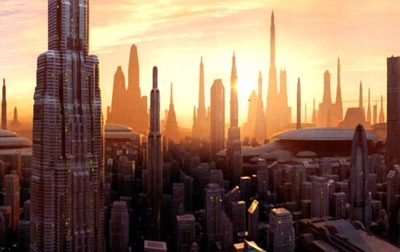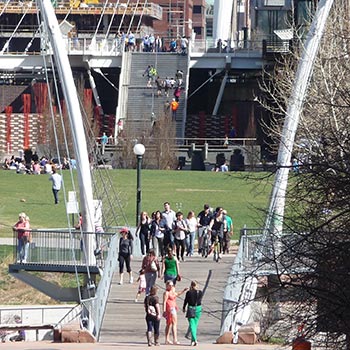Denver Urbanism: Cities are for people, not cars

The right to have access to every building in the city by private motorcar in an age when everyone possesses such a vehicle is the right to destroy the city.
– Lewis Mumford, American historian and urban philosopher

Historically, cities were always walkable places, because walking was the only reliable form of human transit available. People had to walk to and from their homes, shops, workplaces, and schools. Naturally then, we built cities so that these different uses were as close to each other as possible, if not stacked on top of each other. For thousands of years, the daily life of people everywhere existed at 3 mph, the walking pace of the average human, and every city was built with that walking pace and distance in mind. Even after people began using animals, and then trolleys and trams, for longer–distance transport, cities were still designed around the pedestrian, as every journey began and ended with walking. This was the case through the early 20th Century in even late–blooming cities like Denver. Our walkable neighborhoods like Highlands, Platt Park, Capitol Hill and a dozen others reflect that heritage.
Then along came the automobile, a remarkable machine that completely transformed how people could travel to and from their homes, shops, workplaces, and schools. All of these different places that people needed to visit daily no longer had to be close to each other. They could be many miles apart — far beyond walking distance — and still be accessible in a matter of minutes. So, in the postwar era when almost everyone in America had access to a car, we started building cities in a radically different way than we had since the dawn of civilization. We started putting all the homes over here, and all the shops over there, and all the workplaces way over there. We went from building dense, mixed-use communities to sprawling, segregated–use communities.
Worse still, these new communities were not just car–friendly, but car–required in their design. With everything so separated and spread out, people had to drive to get from place to place. Walking from home to work or the store was no longer a viable option, and just in case you were tempted to walk anyway, the lack of sidewalks and the hostile pedestrian environment along automobile–clogged streets put an end to that idea. People without cars or those unable to drive were screwed.
The final insult was that we then took the pedestrian–oriented, mixed-use parts of our cities and started retrofitting them to accommodate the automobile. Instead of people walking down the street occupying about four square feet of space each, everyone was now driving down the street in their own two-ton machine occupying about ninety square feet of space each. We converted more and more of our urban land and buildings over to accommodating all of these 2–ton, 90-square-foot machines and we decreased the space available for people to walk.
That was the legacy of city–building in the United States for the last half of the 20th Century. Fortunately, that mindset is in retreat. While we still have a long way to go, cities like Denver are once again investing in denser, mixed-use, walkable communities, and our historic neighborhoods that were founded on those old-urbanism principles are now more popular than ever. Today, we are striving to build cities for people, not cars.
What's Your Reaction?
Ken Schroeppel is a faculty member of the College of Architecture and Planning at the University of Colorado Denver. He teaches in the Master of Urban and Regional Planning program. Ken is also the founder of the DenverInfill and DenverUrbanism website and blogs, which offer aspects of sustainable design and urbanism in the Mile High City. Find them at DenverInfill.com.




